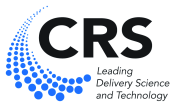Abstract
Controlled release systems have been developed to improve the temporal and spatial presentation of drug in the body, to protect drug from physiological degradation or elimination, to improve patient compliance, and to enhance quality control in manufacturing of drug products. When designing controlled-release systems, it is important to identify and understand particular mechanisms involved in the release process. Often, more than one mechanism is involved at a given time or different mechanisms may dominate at different stages of the drug delivery process. This chapter begins with several vignettes, each highlighting a mode of controlled drug delivery and identifying associated mechanisms. An introductory description of several of the mechanisms follows. Details regarding these mechanisms are provided in subsequent chapters.
Access this chapter
Tax calculation will be finalised at checkout
Purchases are for personal use only
References
Amidon GL, Lee PI, Topp EM (eds) (2000) Transport processes in pharmaceutical systems. Marcel Dekker, New York
Amiji M (ed) (2005) Polymeric gene delivery. CRC, Boca Raton, FL
Arshady R (ed) (2003) Biodegradable polymers. Citus Ltd, London
Baker RW (1987) Controlled release of biologically active agents. Wiley, New York
Chasin M, Langer R (eds) (1990) Biodegradable polymers as drug delivery systems. Marcel Dekker, New York
Fang J, Nakamura H, Maeda H (2011) The EPR effect: unique features of tumor blood vessels for drug delivery, factors involved, and limitations and augmentation of the effect. Adv Drug Deliv Rev 63(3):136–151
Flynn GL, Yalkowski SH, Roseman TJ (1974) Mass transfer phenomena and models: theoretical concepts. J Pharm Sci 63:479–510
Friend DR (ed) (1992) Oral colon specific drug delivery. CRC, Boca Raton, FL
Grassi M, Grassi G, Lapasin R, Colombo I (eds) (2007) Understanding drug release and absorption mechanisms. CRC, Boca Raton, FL
Guy RH, Hadgraft J (eds) (2003) Transdermal drug delivery systems: second edition, revised and expanded. Marcel Dekker, New York
Hillery AM, Lloyd AW, Swarbrick J (2001) Drug delivery and targeting for pharmacists and pharmaceutical scientists. Taylor & Francis, Oxford
Kim C-J (1999) Controlled release dosage form design. Technomic, Lancaster, PA
Kydonieus A (ed) (1993) Treatise on controlled release. Marcel Dekker, New York
Langer R (1990) New methods in drug delivery. Science 249:1527–1533
Langer R (1998) Drug delivery and targeting. Nature 392:5–10
Langer R, Peppas NA (1981) Present and future applications of biomaterials in controlled drug delivery systems. Biomaterials 2:201–214
Langer R, Peppas NA (2003) Advances in biomaterials, drug delivery, and bionanotechnology. AIChE J 49:2990–3006
Lee VHL (ed) (1991) Peptide and protein drug delivery. CRC, Boca Raton, FL
Mahato R (ed) (2005) Biomaterials for delivery and targeting of proteins and nucleic acids. CRC, Boca Raton, FL
Mathiowitz E (ed) (1999) Encyclopedia of controlled drug delivery. Wiley, New York
Mathiowitz E, Chickering DE, Lehr C-M (eds) (1999) Bioadhesive drug delivery systems. Marcel Dekker, New York
Mitra AK (ed) (2003) Ophthalmic drug delivery systems. Marcel Dekker, New York
Ottenbrite R, Kim SW (eds) (2001) Polymeric drugs and drug delivery systems. CRC, Boca Raton, FL
Park K (ed) (1997) Controlled drug delivery. Challenges and strategies. American Chemical Society, Washington, DC
Park K, Shalaby WSW, Park K (1993) Biodegradable hydrogels for drug delivery. Technomic, Lancaster, PA
Peppas NA (ed) (1987) Hydrogels in medicine and pharmacy. CRC, Boca Raton, PA
Peppas NA, Hilt JZ, Khademhosseini A, Langer R (2006) Hydrogels in biology and medicine: from molecular principles to bionanotechnology. Adv Mater 18:1345–1380
Ranade VV, Hollinger MA (eds) (2003) Drug delivery systems. CRC, Boca Raton, FL
Rathbone MJ, Hadgraft J, Roberts MS (eds) (2003) Modified-release drug delivery technology. Marcel Dekker, New York
Saltzman WM (2001) Drug delivery: engineering principles for drug therapy. Oxford University Press, New York
Santini JT, Cima MJ, Langer R (1999) A controlled release microchip. Nature 397:335–338
Santus G, Baker RW (1995) Osmotic drug delivery: a review of the patent literature. J Contr Rel 35:1–21
Tanquary AC, Lacey RE (eds) (1974) Controlled release of biologically active agents. Plenum, New York
Uchegbu IF, Schatzlein AG (eds) (2008) Polymers in drug delivery. Taylor and Francis, Boca Raton, FL
Wise DL (ed) (2000) Handbook of pharmaceutical controlled release technology. Marcel Dekker, New York
Author information
Authors and Affiliations
Corresponding author
Editor information
Editors and Affiliations
Rights and permissions
Copyright information
© 2012 Springer US
About this chapter
Cite this chapter
Siegel, R.A., Rathbone, M.J. (2012). Overview of Controlled Release Mechanisms. In: Siepmann, J., Siegel, R., Rathbone, M. (eds) Fundamentals and Applications of Controlled Release Drug Delivery. Advances in Delivery Science and Technology. Springer, Boston, MA. https://doi.org/10.1007/978-1-4614-0881-9_2
Download citation
DOI: https://doi.org/10.1007/978-1-4614-0881-9_2
Published:
Publisher Name: Springer, Boston, MA
Print ISBN: 978-1-4614-0880-2
Online ISBN: 978-1-4614-0881-9
eBook Packages: Biomedical and Life SciencesBiomedical and Life Sciences (R0)


